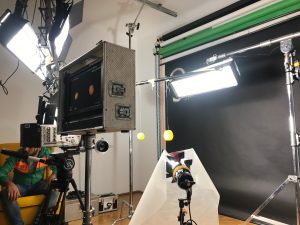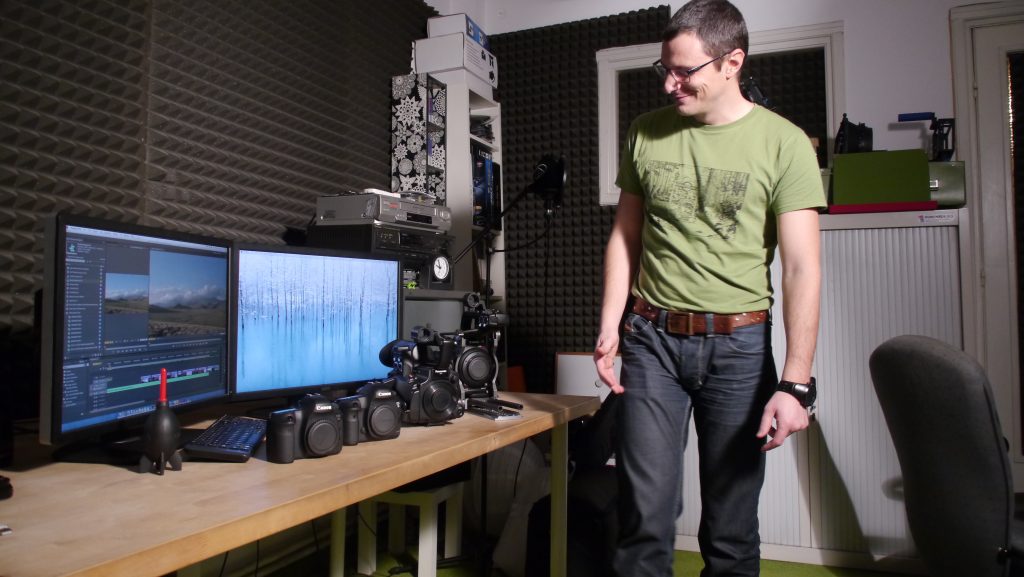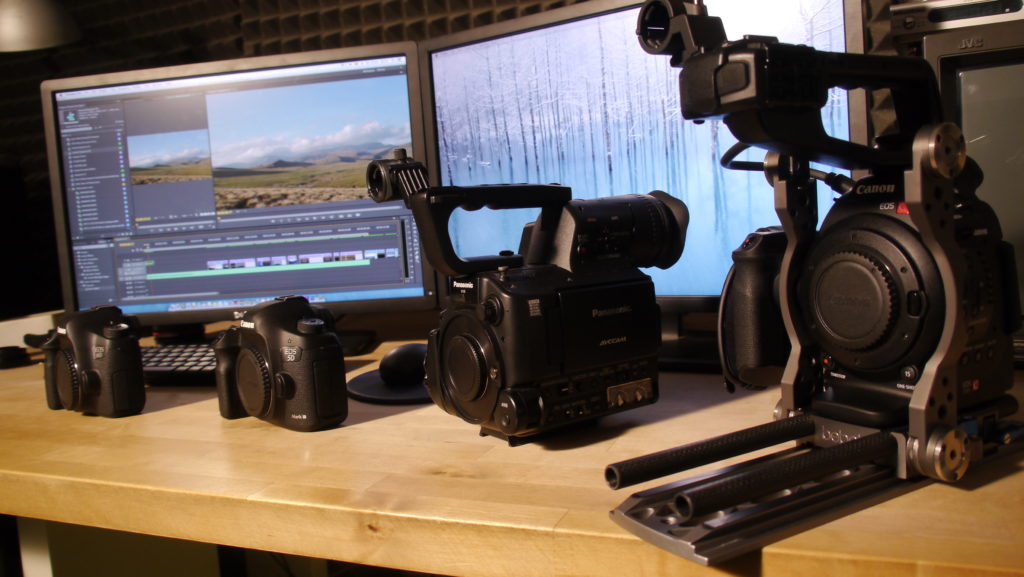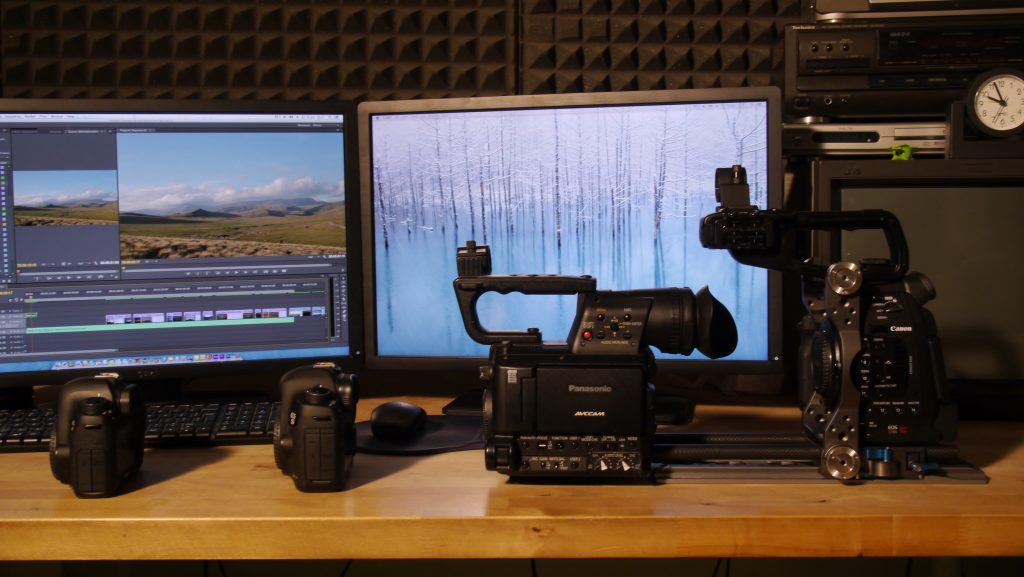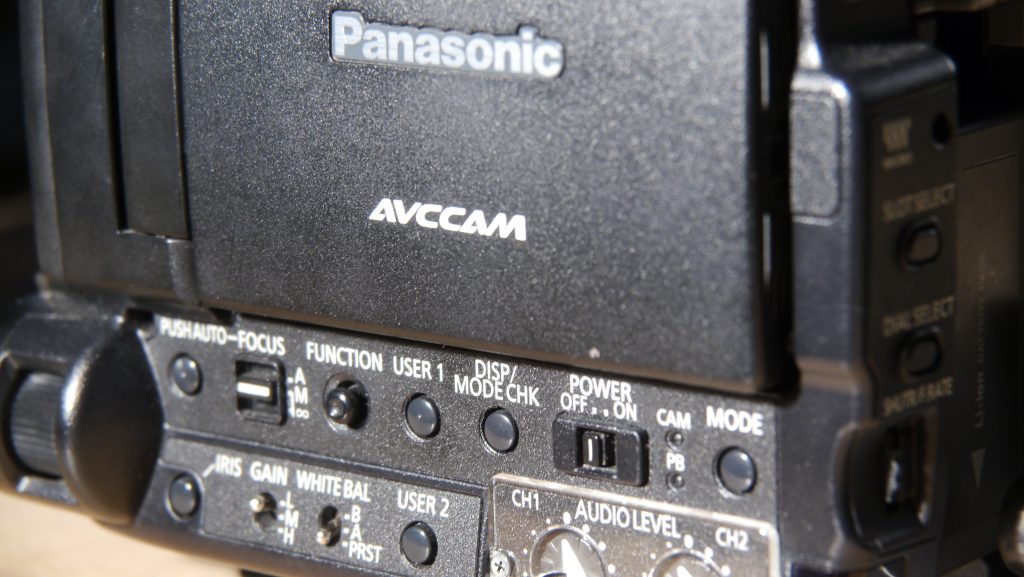This is a test that, although filmed in December 2013, had to wait well over a year until it was edited and presented. A comforting formula is “better later than ever”; a euphemism for lazy 🙂
The intention of doing this test comes from the variety of cameras that we use to film different projects. Nowadays it mixes in the filming (when shooting with more than one camera) DSLRs with each other, DSLRs with video cameras, each of its own type and with its own specifications, sections and image processors. And, of course, different.
There have always been many variants of camcorders on the market but now, more than before, there is a dearth of offers. With a landscape full of DSLRs and mirrorless films that shoot very well – including 4K and slow motion – plus brands that have decided to storm the video camera segment – Blackmagic Design, AJA – which are complemented by the stuff. these small and fantastic ones called action cameras and which have amazing performances in a size of matchbox, it becomes more and more complicated this equation of room matching.
There was a time when four different rooms were used at Parcfilm:
Canon 5D, Canon 6D, Panasonic AG AF 100, Panasonic GH2. Si cand filmam cu mai multe intotdeauna ne loveam in postproductie de problema potrivirii culorilor.
For such projects I used Panasonic AF100 as the main camera (it is normal to use the most expensive, best and most functions, especially since it has XLR sound inputs) and the Canon 5D as the camera 2. All good until the installation – sometimes it was a nightmare to match the colors of the two rooms. So we decided to do a test to determine which are the best color profiles that we should use so that we do not have so much headache in post-production.
I did this test with Istvan Bordi, with whom I had just finished filming for Timisoreana at “Micutu si Nelutu“, (o epopee comica cu un porc viu) asa ca eram incinsi si cu chef. Istvan a adus la test si un Canon EOS C100 (mark I) pentru a face investigatia mai extensiva.
Through the office hangs for a long time a sample of upholstery textures – different colors, different textures – only good to use as a filming subject. It turned out to be a very inspiring choice and then provided us with a lot of information about how each camera interprets the colors and issues generated by the image processor.
For the test I used two objectives: for large frames I shot with Carl Zeiss Planar T* 1.4/50mm, iar pentru cele stranse cu Carl Zeiss Makro-Planar T* 2/100mm. Am incercat desigur sa pastram pe cat posibil aceleasi setari la camere. Nu s-a putut face asta tot timpul datorita diferentei de sensibilitate a senzorilor.
Watching the material brought us many surprises and honestly changed the way I looked at these devices. Before the test I had in my mind a completely different ranking. For example, I was thinking of the Canon C100 as probably the best of the 4 tested cameras. For several reasons – it’s a dedicated video camera, more recent production than Panasonic AG AF100 etc. Well, it turned out that things are not so.
Take a look at the test first and then follow the comments below:
The “moire” effect I observed on the Canon C100 and even more pronounced – on the Canon 6D – was incredible. In the sense that I would not have expected to see the effect of dying more on a C100 than on a 5D Mark III or a Panasonic AF 100. So in this chapter the classification is quite clear:
The first place is disputed by the Canon 5D Mark III and Panasonic AF 100. And still a question related to the image quality and its resolution. Although over the years I have lived with the impression that the image coming directly from Mark III was better, this test makes you believe that you see more details in the image coming out of Panasonic (of course no post-processing is applied on the stream- video out of the rooms). I say this without zooming in on the image; it is fixed what I see the eyes in this video, naturally, and I think that ultimately counts!
Then the second place comes Canon C100 followed by Canon 6D. The 6D produces some pretty ugly “moire” effects, if you look carefully at the left column to the piece of material just below the midline of the image.
Asa cum spuneam, de aici a pornit testul: de la intentia de a gasi o solutie de imperechere a culorilor ce vin din camere. E destul de clar ca nu se pot lasa camerele pe profilele naturale de culoare – chestia asta nu va aduce nici un avantaj in postproductie.
Cea mai buna solutie este sa instalezi profilul Cinestyle pe Canon 5D si 6D, sa folosesti profilul Cinelike – D pe Panasonic AG AF 100 si sa tragi in Canon Log pe Canon C100. Sau cel putin asa ni s-a parut noua:)
As for the rolling shutter, again, big surprises!
The best of all four cameras – Panasonic AF 100. And I would like to mention that this test was done on the first model of Panasonic in this series, not the current one that has some upgrades integrated and which probably will handle and better than that. By far the smallest problems of rolling shutter.
Then in second place comes Canon 5D Mark III, followed by third, C100 and 6D. The latter are both, in my opinion, quite bad in this regard.
More is not to say. I hope this test will help you make the best decision regarding the cameras you use in one movie or another. There are many rumors and prejudices on the market that, frankly, I get out of jumping. Too many opinions are based on the marketing efforts of one company or another or on the rumor mill or simply on the sidelines. There are simply times when certain rooms are better or worse seen than others.
On the other hand I know that this test covers only a small part of the situations in which a camera is exposed. Lots of other things that can matter a lot (sound capabilities, ND filters built in, the “subjective” quality of the image delivered by the processor, etc.) are not taken into account. And of course every room has its own place in any production on the face of the earth.
The Parcfilm solution: although the test proved that Panasonic seems to be the best camera, I sold it :))
Currently, the 5D and 6D battleships work as a perfect pair when both are set on the Cinestyle color profile. There is no need to do anything else in post-production to suit them. Less adjustments for exposure, but these are natural if you match two identical rooms. This is the best solution until the next purchase to come: the new SONY FS7. And then the tests will start again 🙂
And sorry for the fact that I used different picture profiles on the camera when I made the pictures for this article. I haven’t been able to edit them;)
nbsp;


